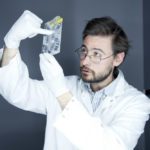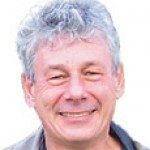Link to Pubmed [PMID] – 21085182
Nature 2010 Nov;468(7322):457-60
The reprogramming of X-chromosome inactivation during the acquisition of pluripotency in vivo and in vitro is accompanied by the repression of Xist, the trigger of X-inactivation, and the upregulation of its antisense counterpart Tsix. We have shown that key factors supporting pluripotency-Nanog, Oct4 and Sox2-bind within Xist intron 1 in undifferentiated embryonic stem cells (ESC) to repress Xist transcription. However, the relationship between transcription factors of the pluripotency network and Tsix regulation has remained unclear. Here we show that Tsix upregulation in embryonic stem cells depends on the recruitment of the pluripotent marker Rex1, and of the reprogramming-associated factors Klf4 and c-Myc, by the DXPas34 minisatellite associated with the Tsix promoter. Upon deletion of DXPas34, binding of the three factors is abrogated and the transcriptional machinery is no longer efficiently recruited to the Tsix promoter. Additional analyses including knockdown experiments further demonstrate that Rex1 is critically important for efficient transcription elongation of Tsix. Hence, distinct embryonic-stem-cell-specific complexes couple X-inactivation reprogramming and pluripotency, with Nanog, Oct4 and Sox2 repressing Xist to facilitate the reactivation of the inactive X, and Klf4, c-Myc and Rex1 activating Tsix to remodel Xist chromatin and ensure random X-inactivation upon differentiation. The holistic pattern of Xist/Tsix regulation by pluripotent factors that we have identified suggests a general direct governance of complex epigenetic processes by the machinery dedicated to pluripotency.

